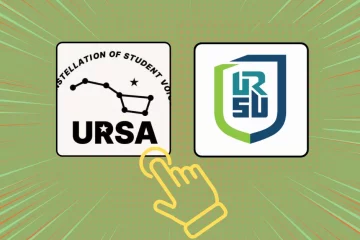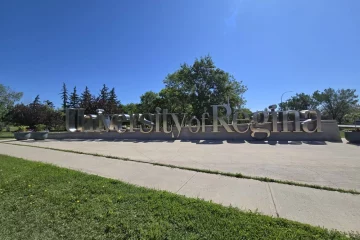What it is, why it’s important, and the TRC’s calls to action
Each year since 2021, on Sept 30, Canada observes the National Day for Truth and Reconciliation, a day dedicated to honoring the children who never returned home from residential schools, the survivors, and their families and communities.
It serves as a solemn reminder of the tragic and painful legacy of residential schools, while also encouraging Canadians to engage in meaningful conversations about reconciliation. This day is a crucial part of the broader reconciliation process, acknowledging the past and fostering healing.
The National Day for Truth and Reconciliation was established as a federal statutory holiday following legislative changes made by Parliament. Its creation was in direct response to the Truth and Reconciliation Commission’s (TRC) Call to Action (CTA) 80, which recommended a National Day of Commemoration to reflect on the legacy of residential schools.
The TRC issued 94 CTAs to address the legacy of residential schools and advance reconciliation between Indigenous and non-Indigenous Canadians. These recommendations aim to acknowledge the harms of the past and prevent future injustices.
The 94 CTAs are divided into two main sections: Legacy and Reconciliation.
Legacy (CTAs 1–42): Focus on addressing the historical impacts of residential schools, highlighting issues related to child welfare, education, language, culture, health, and justice. The goal is to fully recognize the genocide experienced by Indigenous Peoples.
Reconciliation (CTAs 43–94): Aim to dismantle systemic racism and create lasting change in areas such as government policy, education, media, sports, business, and legal equity for Indigenous Peoples. These CTAs also promote awareness through education to prevent future injustices.
Progress on implementing the CTAs has been slow. By June 2021, only 12 had been completed, as tracked by CBC’s “Beyond 94” project.
Implemented calls include:
CTA 13: Federal recognition of Indigenous language rights.
CTA 41: Inquiry into Missing and Murdered Indigenous Women and Girls.
CTA 48: Adoption of the UN Declaration on the Rights of Indigenous Peoples by churches.
CTA 72: Federal support for the National Centre for Truth and Reconciliation.
CTA 88: Long-term government support for the North American Indigenous Games.
According to APTN, former TRC commissioners “are sounding an alarm,” and calling out what has been “slow and uneven” progress in terms of implementing the calls to action.
“It is very concerning that the federal government still does not have a tangible plan for how they will work towards implementing the Calls to Action,” Murray Sinclair told APTN.
The commission, which Murray Sinclair was chair of, operated from 2008 to 2015, documented the experiences of Indigenous children forced into these schools, producing 94 Calls to Action aimed at addressing the historical and ongoing impacts of colonization.
The Shirt Day, an Indigenous-led grassroots movement that highlights the generational trauma caused by residential schools explains that the orange shirt symbolizes the stripping away of culture, identity, and self-esteem that Indigenous children endured. The origins of Orange Shirt Day trace back to Phyllis Webstad, whose orange shirt was taken from her on her first day at a residential school. Her story has since become a symbol of the cultural erasure experienced by thousands of Indigenous children.
In recognition of these experiences, people across the country are encouraged to wear orange on Sept 30 to honour survivors and those who never made it home. The movement’s motto, “Every Child Matters,” serves as a reminder that the impacts of residential schools are still felt today, and it calls on people to wear orange as a sign of solidarity and remembrance.
Throughout Canada, communities, schools, and organizations host events to reflect on the history of residential schools. From public gatherings to virtual educational programs, settlers are provided opportunities to learn and engage with the stories of Indigenous Peoples.
The National Centre for Truth and Reconciliation, for example, offers free virtual programming during Truth and Reconciliation Week, which runs from Sept 23 to 27. This initiative invites students, educators, and the public to deepen their understanding of First Nations, Inuit, and Métis cultures and histories.
On Sept 30, major landmarks, including the Peace Tower and Senate Building on Parliament Hill, are illuminated in orange to honour the children and survivors.
This year, the National Day for Truth and Reconciliation commemorative gathering, Remembering The Children, was broadcast live from Parliament Hill. This 90-minute event, presented by APTN and the National Centre for Truth and Reconciliation, brings together diverse voices to honour those affected by residential schools.
For many Indigenous communities, Sept 30 can be a day of both reflection and emotional difficulty. Mental health supports are available for former residential school students through crisis referral services and helplines such as the Hope for Wellness Help Line, which provides counseling 24/7 for Indigenous peoples across Canada.
The National Day for Truth and Reconciliation is one of many steps toward addressing the harm caused by residential schools. The TRC’s final report, released in 2015, emphasized the need for continued efforts in acknowledging this history and its lasting effects. The creation of the National Centre for Truth and Reconciliation ensures that the stories of survivors are preserved, offering ongoing education and advocacy for reconciliation.
One of the TRC’s CTAs specifically emphasizes the need for comprehensive education on Indigenous histories and cultures in schools.
CTA 62 calls on federal, provincial, and territorial governments to make age-appropriate curriculum on residential schools, treaties, and Indigenous contributions to Canada mandatory in all schools. This is a transformative shift in how Indigenous histories are taught in Canadian classrooms.
Historically, Indigenous Peoples’ stories were either omitted or presented through a colonial lens, which perpetuated stereotypes and misunderstandings. Integrating Indigenous perspectives into education at all levels – from elementary to post-secondary – helps to dismantle these biases and ensures that future generations grow up with a deeper understanding of the injustices faced by Indigenous Peoples by settler-colonialism and the Canadian government.
For example, some schools across Canada are now incorporating units on residential schools, often inviting Indigenous elders and speakers to share their lived experiences. These personal narratives can have a profound impact on students, helping them see beyond the textbooks and connect emotionally with the historical and ongoing effects of colonialism.
Educators also explore treaties, Indigenous governance systems, and cultural practices that had been undervalued or suppressed for decades. By engaging with these subjects, students can better appreciate the rich and diverse cultures of First Nations, Inuit, and Métis Peoples.
Canadians are thus urged to reflect on the legacy of residential schools and commit to meaningful action in the spirit of reconciliation.











